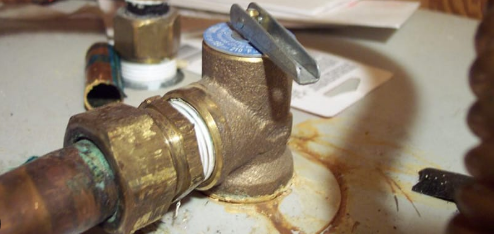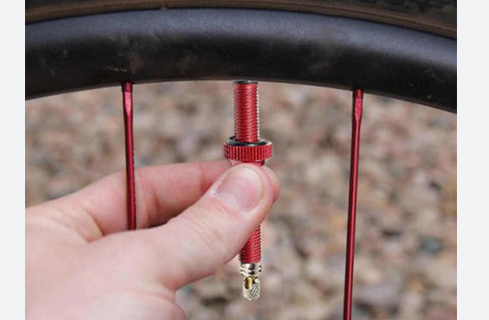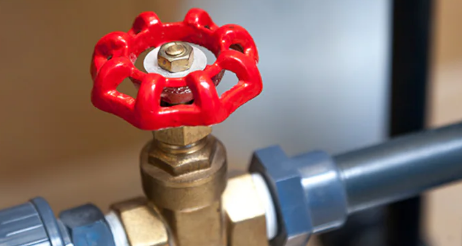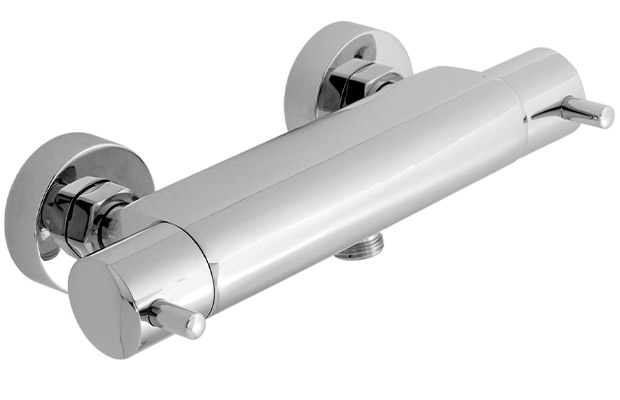
What is a thermostatic shower valve? Since the temperature will stay constant throughout your shower, thermostatic shower valves have a distinct advantage.
Modern technology is used with thermostatic shower valves to allow you to regulate the water’s temperature. Learn more about it by reading on.
Table of Contents
Different Types Of Thermostatic Valves
Bar Shower Valve
A small bathroom is an ideal place for the bar shower valve. They are reasonably priced and simple to integrate. These valves come in a variety of materials, including chrome, metallic finish, and black finish.
Concealed Shower Valve
For bathrooms with minimalist designs, concealed valves work perfectly. The rest is covered by a plate behind the wall and is only accessible for the controls and showerhead. Choose our concealed thermostatic valve if you’d like less bulk on the wall of your bathroom.
Exposed Shower Valve
Bathrooms with designs and patterns look elegant when exposed shower valves are used. As the name implies, you can see your shower operating externally on the wall through the exposed valve. This will make it simpler for you to switch between the hand shower and the overhead shower. Our exposed valve will perfectly fit any large wall space in your bathroom.
Traditional Shower Valve
For bathrooms with a classic design, traditional valves are ideal. Our conventional thermostatic valve will give the traditional design a dash of contemporary flair, creating the ideal fusion of vintage and contemporary. Traditional valves make the cross handle and control visible. For a wonderful bathing experience, pair these with a lovely shower enclosure in your bathroom.
Read More: Air Admittance Valve
How Does Thermostatic Shower Valve Work?
Thermostatic showers mix hot and cold water to the desired temperature after storing the hot water in their valve. A thermostatic mixing valve can also adjust its mixing to any predetermined temperature in response to variations in the water’s temperature. When there is no cold water supply, thermostatic mixers also close their thermostatic valves. By doing this, you will avoid getting burned by the hot water.
Some core elements of thermostatic diverters are:
Element
The element, which is a tiny motor, increases, and decreases in response to the temperature of the water flowing through the thermostatic valve.
Piston
The temperature of the water is controlled by the piston. To keep the water at a constant temperature, it passes over the hot and cold water entry points.
Temperature Control
You regulate and alter the temperature of the shower using temperature control. The piston will be moved by this control as it mixes the hot and cold water to the desired temperature.
To both achieve and maintain the desired water temperature, all these components work together in a shower valve.
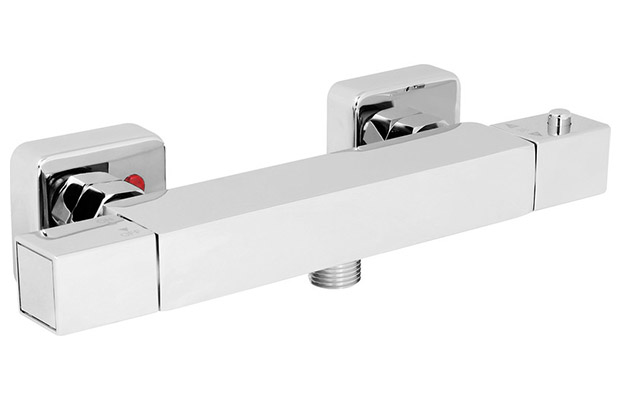
Benefits Of Thermostatic Shower Valves
An excellent feature of this valve is that it allows you to adjust the flow volume without changing the temperature. Simply reduce the water flow while shaving or shampooing to help with water conservation! All of this is possible because of a wax component inside the shower valve that responds to temperature changes by continuously balancing the ratio of cold to hot water.
If the flow of either hot or cold water were to stop, the valve would immediately stop the flow coming from the opposite side. The main benefit of a thermostatic valve is that it gives you complete control over the temperature of your shower. For example, while your water heater may be set to 140°F to prevent bacterial contamination, the water that emerges from your shower head will always be 100°F (you can set your maximum output temperature on the valve).
You can get a consistent temperature, increased energy efficiency, higher flow rates, and possibly a lower water bill by installing this system.
How To Fit A Thermostatic Shower Valve?
Assemble your tools, including a pipe cutter, tapes, hammer, and drill, before installing your thermostatic valve shower. To fit the thermostatic mixing valve, follow the steps:
1. Selecting The Water Supply
Decide where to get the cold and hot water supplies in the first step. Use your thermostatic valve in conjunction with the tap water supply if it is located above your bathtub. If you’re putting it in your shower enclosure, you can connect it to the nearest piping that runs under the floorboards.
2. Flush The Water From Piping
Due to dirt in the water flow, your shower’s thermostatic diverter may become damaged. Draining water through your water pipes after removing the stop ends. By putting a bucket underneath, you can catch any dirt.
3. Cut Your Pipes
Keep the valve next to the pipes as you measure them in order to cut them. To help the valve flush water against the shower wall, measure the length of the hot and cold water outlets’ pipes. Use a saw or pipe cutter to trim the extra piping after you’ve measured it.
4. Drill The Holes
Drill holes where you want to attach the shower valve after marking the location. For best results, drill tiles or walls with a diamond tip.
5. Fit A Compression Olive
Place a compression olive in each of the valve’s inlets and tighten the nut with one turn to prevent leakage and properly seal your thermostatic diverter.
6. Align Thermostatic Valve
Connect the cold and hot pipes to the thermostatic shower valve. Verify that the valve enters the pipe easily. With a spanner, tighten the nuts while mounting the valve to the wall.
Pressure Balance Vs. Thermostatic Valves
To maintain a constant temperature throughout a shower, there are two different types of regulating valves. Each has advantages, but one stands out as the best at providing the ideal showering experience.
Pressure Balance Shower Valves
Shower valves with pressure balances function as their name suggests. They maintain a constant temperature by balancing the water pressure to make up for a shortage of hot or cold water. Unfortunately, this type of shower valve only balances the pressure to keep the temperature constant.
As the temperature is stabilized, there is a large range in the pressure of the water coming from the shower head. This is particularly apparent when using multiple shower heads or low-flow shower heads. Although it may not be as shocking as a temperature change, a drop in pressure can still ruin a shower.
Because they are less expensive, pressure balance shower valves are attractive to people on a strict spending plan. Although the fact that it only balances temperature and not water flow may be somewhat inconvenient, staying safe in the shower is worth it to not have to worry about extreme temperatures.
Thermostatic Shower Valves
The temperature of the shower is balanced by pressure-balanced shower valves using variations in water pressure, whereas thermostatic shower valves actually regulate the water temperature. Since the temperature will stay constant throughout your shower, thermostatic shower valves have a clear advantage.
Thermostatic shower valves allow you to pre-set the water temperature, guaranteeing that it won’t get hotter or colder than your desired setting while still allowing each person to manually adjust the water temperature. Pre-selecting a water temperature also saves water, making it a green choice. A thermostatic shower valve can accommodate a range of shower applications thanks to its high flow rates.
Are Thermostatic Valves Worth It?
In the long run, thermostatic shower valves can help you save money on your heating and water bills. Additionally, it prevents any skin burns while taking a hot shower. The water temperature will remain constant even if you stop and restart the shower.
FAQs
Can I Use A Thermostatic Shower In Place Of My Electric Shower?
It is possible to switch from an electric shower to one with a thermostat. Installing a pump will increase the water’s flow or pressure. Then you can add the plumbing that joins the hot and cold water supplies, and connect it to your cylinder. It will change your shower from an electric shower to a thermostatic shower by connecting this pipework with the valve.
Do Thermostatic Showers Lessen Pressure?
No, thermostatic showers only respond to changes in water temperature, not pressure. When the temperature rises, the element will expand, reducing the flow of hot water while increasing the amount of cold water added to the system to lower the temperature.

